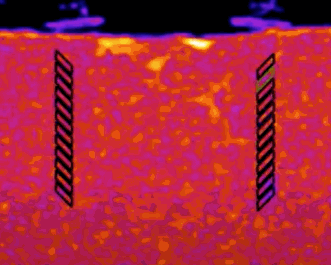At Hi Fidelity Genetics, I spearheaded the development of the RootTracker technology for non-invasively sensing plant root growth. In addition to prototyping electronics, I conducted extensive exploratory analysis and robust algorithm design.
Technology
The RootTracker leverages electrical impedance sensing to monitor roots as they grow in soil. Electrodes arranged around plants detect resistance and capacitance fluctuations caused by roots.
My initial experiments identified a relationship between sensor measurements and root proximity. Thorough analysis of environmental factors like soil moisture was critical to isolate root signals. One of the seminal early experiments I conducted was a 2D X-ray timelapse of roots growing through soil while prototype detectors embedded in the soil took localized voltage measurements. Through extensive exploratory data analysis and additional experiments, I was able to turn raw time-series measurements into detections of roots based on anomalous RC signatures (see timelapse X-ray above).
Scaling the technology and root detection algorithm
With a team of engineers, we went from prototype to product: RootTracker, an IOT root sensing device that sent raw voltage data from farm fields to a central gateway, to an AWS server for data, and finally to a local PostgreSQL database. I developed the main Matlab algorithm that transformed the raw data to root detections, which was a multi-step algorithm involving significant data preparation and cleaning of time-series data:
- Data interpolation and noise filtering to remove artifacts.
- Median normalization to amplify signals
- Masking irregular data from moisture or hardware issues
- Defining states and parameters to detect roots
- Identifying signature resistance-capacitance changes indicating roots

Impact
The RootTracker offered novel underground visibility root growth dynamics. Through manual analysis of numerous large field trials, I was able to not only continually refine the algorithm, but extract useful biological insights through root detection statistics that paired with experimental information such as seed treatment, genotype and irrigation information and communicate these findings to stakeholders such as clients and company leadership. In one study spanning three trials each containing over 1000 devices (study published here, one trial of which I directly oversaw in Rancagua, Chile), we were able uncover genotype specific responses to abiotic stress, whereby plants would later produce deeper roots in response to an imposed drought. We were also able to validate the accuracy of the technology through root excavation and imaging.


